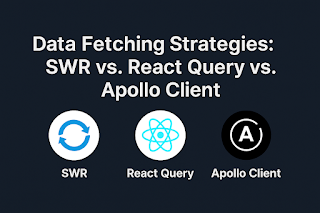Creating a Scalable Full-Stack Web App with Next.js and FastAPI
Modern web development increasingly relies on high-performance, scalable, and developer-friendly tools. One powerful combination that's gaining popularity is pairing Next.js for the frontend with FastAPI on the backend. Together, they enable developers to build full-stack applications that are fast, secure, and maintainable.
In this blog, we’ll explore how and why this combo works so well, and walk through an architecture that supports scale and performance.
Why Next.js + FastAPI?
Next.js (Frontend)
- React-based framework offering server-side rendering (SSR), static site generation (SSG), and full routing.
- Built-in image optimization, API routes, and file-based routing.
- Perfect for SEO, fast page loads, and a smooth user experience.
FastAPI (Backend)
- Python-based, high-performance framework for building APIs with automatic validation and documentation.
- Supports async out of the box and is ideal for microservices or real-time backends.
- Great for ML/AI integration, RESTful APIs, and even GraphQL with the right extensions.
System Architecture
[ Browser ]
↓
[ Next.js Frontend ]
↓ ↔ (optional API routes for auth)
[ FastAPI Backend (REST or GraphQL) ]
↓
[ PostgreSQL / MongoDB / Redis ]
- Frontend runs on Vercel (or similar)
- Backend can be containerized with Docker and deployed via platforms like Render, Fly.io, or Cloud Run
- Use nginx or API Gateway as a reverse proxy if needed
Key Features to Implement
- Authentication (JWT or OAuth2) FastAPI makes it easy to secure endpoints using OAuth2 or simple JWT.
- Data Fetching Use getServerSideProps or getStaticProps in Next.js to fetch data securely from FastAPI.
- WebSockets / SSE Add real-time updates using FastAPI's WebSocket support and Next.js frontend listeners.
- API Caching & Throttling Use Redis for caching API responses or managing rate limits in FastAPI.
Example Code Snippet
📦 FastAPI Endpoint
from fastapi import FastAPI
app = FastAPI()
@app.get("/api/greeting")
def get_greeting():
return {"message": "Hello from FastAPI"}
Next.js API Fetch
export async function getServerSideProps() {
const res = await fetch('http://localhost:8000/api/greeting');
const data = await res.json();
return { props: { message: data.message } };
}
Scalability Tips
- Deploy FastAPI using Gunicorn + Uvicorn with workers.
- Use Next.js ISR (Incremental Static Regeneration) for content-heavy pages.
- Introduce load balancers and async queues (e.g., Celery, RabbitMQ) in high-throughput apps.
- Add monitoring with tools like Prometheus + Grafana or Sentry.
Real-World Use Cases
- SaaS platforms needing rapid frontend and flexible backend APIs.
- AI/ML dashboards integrating with Python models.
- Internal tools or admin panels with secure access.
Conclusion
The combination of Next.js and FastAPI offers the best of both worlds: a modern React-powered frontend and a fast, Pythonic backend. Whether you're building an MVP or scaling a production app, this tech stack offers the flexibility and power you need.
So if you love React and Python—this full-stack approach might just be your new favorite.
#Nextjs #FastAPI #FullStackDevelopment #WebApp #Python #React #ScalableArchitecture #APIDesign #ModernWebDev #DevTools #Microservices #Docker #WebPerformance




Comments
Post a Comment